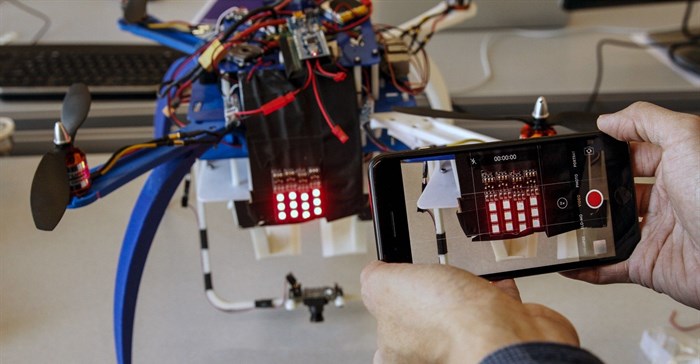






The car manufacturer’s drone-to-vehicle technology would allow drone operators the convenience of being able to launch, fly, and dock drones from the safety and comfort of their vehicles on a job site.
Ford is the only automaker on the Federal Aviation Administration’s (FAA) Rulemaking Committee, and a proactive participant in the regulatory conversation around the integration of drones into civil aviation airspace.
By accessing an app projected through Ford’s integrated SYNC 3 communications and entertainment system, the vehicle would serve as a mobile base station, facilitating a real-time link between the vehicle, the drone, and the cloud, so data could be shared. For quick and affordable inspection and monitoring, surveying and mapping, data collection and imaging, the scope for commercial applications of drone-to-vehicle technology is endless.
The South African Civil Aviation Authority (CAA) requires drone operators to be fully licensed before flying commercially. A Remote Pilot’s Licence (RPL) from a fully accredited CAA training academy, an Air Service Licence (ASL) from the Department of Transport, and a Remote Operator’s Certificate (ROC) from the CAA itself are all non-negotiable.
Says Sean Reitz, CEO of United Drone Holdings, and the CAA-accredited RPAS Training Academy which educates and trains newcomers to the drone industry, whilst assisting to create employment opportunities: “While we do have comprehensive regulations regarding the use of commercial drones, they are considered highly restrictive, with only 22 ROCs issued by the CAA to date.”
“There are several converging factors that will allow for growth and development of the commercial drone industry, with the most important one being the wider adoption of BVLOS (beyond visual line of sight) operations. This is where the real value of drones in South Africa will be demonstrated,” says Reitz.
Up until now, there wasn’t a way to identify and track drones in flight, BVLOS. Ford colleagues John Luo, manager of emerging technology integration and wireless connectivity, and Adi Singh, principal scientist of unmanned aerial vehicle (UAV) systems, made a recent proposal to the FAA which could become a game changer.
Every drone registered with the FAA is given a 10-digit number, which acts like a vehicle’s licence plate. This patent-pending idea is to use the anti-collision lights on the drone to broadcast the drone’s unique number, to be captured and interpreted by a camera-based app that's been developed.
The decoding algorithms can be run on a standard smartphone, which would enable anyone to identify and report a drone operating where it shouldn’t be, making it easier for aviation authorities to track rogue drones.
It remains to be seen whether the FAA will adopt Luo and Singh’s recommendation.